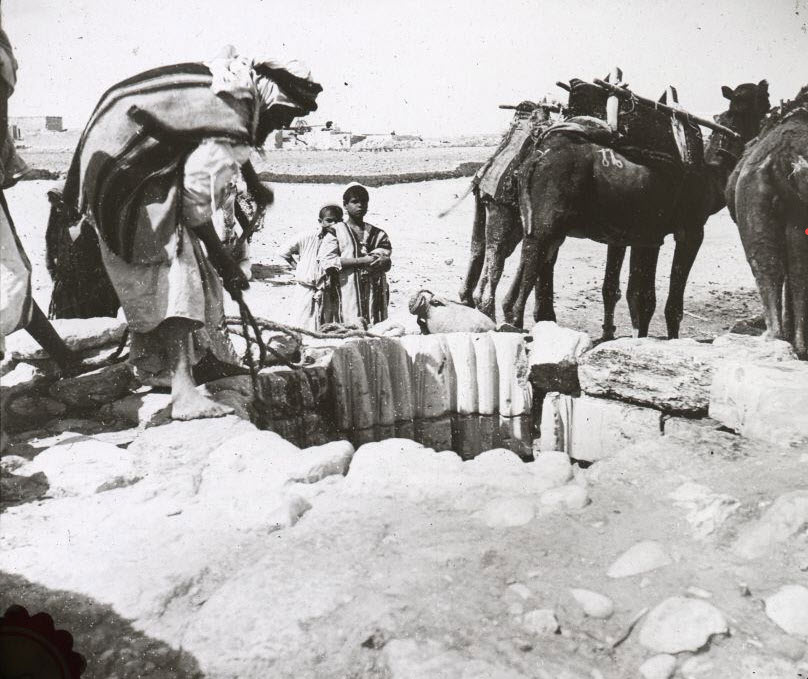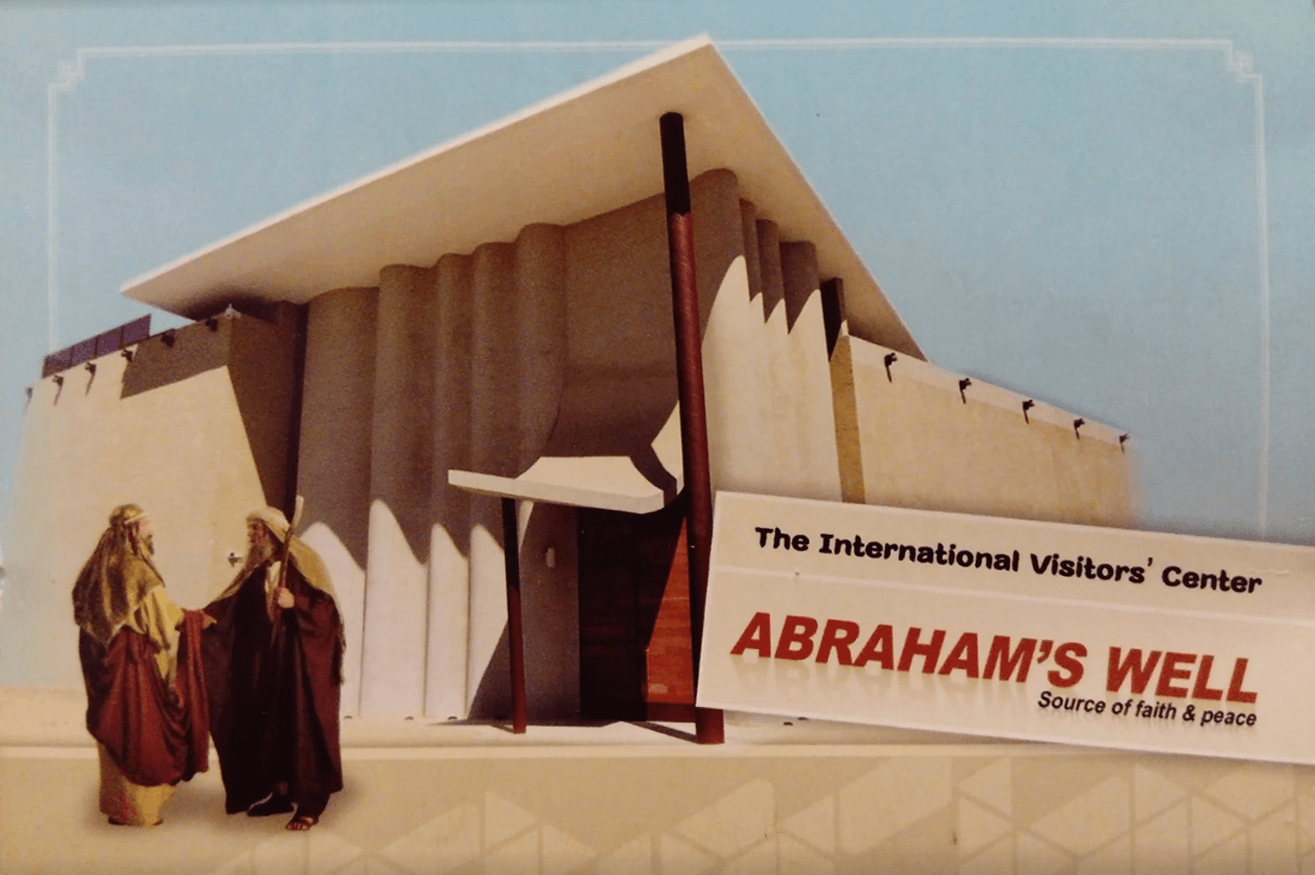What is…
Beersheba
also known as: Beer-sheba, Beer-Sheva, Be'er Sheva
Hebrew: באר שבע —meaning: Beer = well and sheba (sheva) = oath or seven, so “Well of the Oath” or “Well of Seven”
This is the name of a well and a city that grew around it. It sits at the northern edge of the Negev Desert.
Beersheba is where oaths were sworn over wells, borders were drawn, altars rose and fell, and 3 generations of patriarchs heard the same promise from God: “I will be with you.”
The well was dug by Abraham, and it so named because he and the Philistine King Abimelech entered into a oath covenant here (Genesis 21:31). As a result, this place became a vital oasis for thousands of years.

Now it came about at that time that Abimelech and Phicol, the commander of his army, spoke to Abraham, saying,
“God is with you in all that you do; now therefore, swear to me here by God that you will not deal falsely with me or with my offspring or with my posterity, but according to the kindness that I have shown to you, you shall show to me and to the land in which you have sojourned.”
Abraham said,
“I swear it.”
But Abraham complained to Abimelech because of the well of water which the servants of Abimelech had seized. And Abimelech said,
“I do not know who has done this thing; you did not tell me, nor did I hear of it until today.”
Abraham took sheep and oxen and gave them to Abimelech, and the two of them made a covenant. Then Abraham set seven ewe lambs of the flock by themselves. Abimelech said to Abraham,
“What do these seven ewe lambs mean, which you have set by themselves?”
He said,
“You shall take these seven ewe lambs from my hand so that it may be a witness to me, that I dug this well.”
Therefore he called that place Beersheba, because there the two of them took an oath. So they made a covenant at Beersheba; and Abimelech and Phicol, the commander of his army, arose and returned to the land of the Philistines.
Abraham planted a tamarisk tree at Beersheba, and there he called upon the name of Yahweh, the Everlasting God. —Genesis 21:22-33 LSB
His son Isaac later rebuilt the wells his father had dug, received God’s covenant renewal at night, and re-dug the “Well of the Oath” (Genesis 26:23–33).
In the morning they arose early, and each swore to the other; then Isaac sent them away, and they departed from him in peace. Now it happened on that day, that Isaac’s servants came in and told him about the well which they had dug and said to him, “We have found water.” So he called it Shibah; therefore the name of the city is Beersheba to this day. —Genesis 26:31-33
The well was a favorite place of abode of both of these patriarchs, and it was also visited by Jacob/Israel (Genesis 26:33).
So Abraham returned to his young men, and they arose and walked together to Beersheba; and Abraham lived at Beersheba. —Genesis 22:19
Hagar and her son Ishmael were saved by a miraculous well in the “Wilderness of Beersheba” (Genesis 21:14–19).
Isaac’s son Jacob stopped here en route to Egypt, offered sacrifices, and heard God promise to make him a great nation (Genesis 46:1–5).
Then Jacob departed from Beersheba and went toward Haran. —Gen. 28:10
It is mentioned among the “cities” later given to the tribe of Simeon after the Exodus (Joshua 19:2; 1 Chronicles 4:28).
From Dan to Beersheba, a distance of about 144 miles (Judges 20:1; 1 Chronicles 21:2; 2 Samuel 24:2), became the usual way of designating the whole Promised Land, and became a proverb.
After the return from the Captivity the phrase was narrowed to “from Beersheba as far as the valley of Hinnom” (Nehemiah 11:30).
The northern kingdom of the 10 tribes of Israel extended from Beersheba to Mount Ephraim (2 Chronicles 19:4).
The name Beersheba does not happen to be mentioned in the New Testament, but it is noted many times in the Old Testament (Genesis, Joshua, Judges, Samuel, Kings, Chronicles, Nehemiah, Amos).
During the time of Israel’s judges, Samuel’s corrupt sons judged at Beersheba (1 Samuel 8:2).
The prophet Elijah fled from Jezebel, rested under a broom tree of Beersheba, and met God on the way south (1 Kings 19:3–8).
Amos condemned pilgrimages to the shrine of Beersheba: “Do not seek Bethel… Beersheba will go into exile” (Amos 5:5).
In 701 BC King Sennacherib’s Assyrian army burned the Beersheba to ash (matching destruction layers at Lachish and Arad).
The city was briefly resettled under Persian rule, but seems to have been abandoned by Roman times, but the wells never dried.
Location
The ancient city appears to have been located at modern Be'er Sheva (Beersheba), i.e., “Well of the Seven” (referring to the 7 ewe lambs). It is nearly midway between the southern end of the Dead Sea and the Mediterranean Sea.
Nearby is Tel Be'er Sheva (which possibly may more properly be Tel es Seba, the ruins of ancient Bir es-Seba). It is preserved for the public in Israel’s Be'er Sheva National Park.

Archaeology
Excavations (1969–1976, Tel Aviv University) revealed:
- A four-chambered gate identical to those at Hazor and Megiddo—evidence of Solomon-era royal engineering
- Underground grain pits and stables for 100+ horses
- A perfect casemate wall and four-room houses laid out on a grid
Impressive Ancient Water System. At Tel Be'er Sheva was found a 70-meter-deep shaft with a spiral staircase leading to a 1,200-cubic-meter cistern fed by hidden channels—vital insurance against siege or drought. Still intact, it is said to be the best-preserved Iron-Age waterworks in Israel.
Horned Altar. A 1.6-meter limestone 4-horned altar (the only complete one ever found in Israel) was discovered broken and reused in a storehouse wall—archaeological proof of King Hezekiah’s (or Josiah’s) 8th/7th-century cult reforms that banned local high places (2 Kings 18:4; 23:8).
Q & A
- Who is Abraham? and what is his significance?
- Who is Isaac? What do we know about him?
- Sitnah, another well dug by Issacc, south of Beersheba
- Who is King Abimelech?
- Answers about wells in the Bible
- Water in the Bible
- Answers about irrigation in the Bible
- Tamarisk tree
- What is Hinnom?
- What is Hebron? (a city between Beersheba and Jerusalem)
- Who is Phicol?
- What is Kabzeel? (a city near Beersheba)
- The ancient Avvim lived near Beersheba
- What are the high places referred to in Scripture?
 Archaeology and the Bible, abundant evidence in support of the Bible. Discover answers to your questions about archaeology and biblical history.
Archaeology and the Bible, abundant evidence in support of the Bible. Discover answers to your questions about archaeology and biblical history. What are the Cities of the Bible? Names, descriptions, locations and types
What are the Cities of the Bible? Names, descriptions, locations and types

